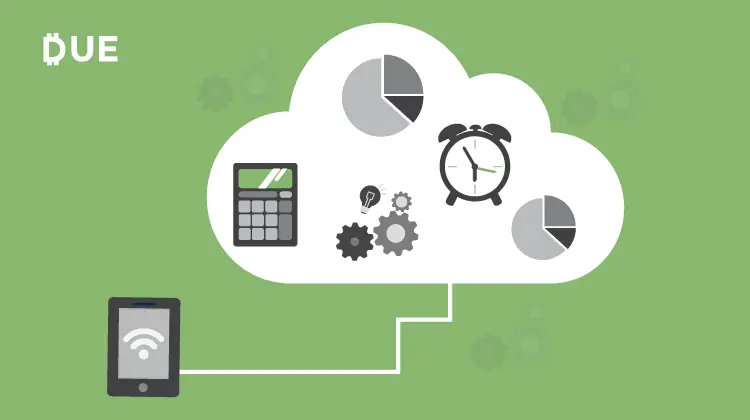After 20+ years as the CEO of USWired and SimplyClouds, I’ve spoken with many small business owners who were uncertain about migrating to cloud. Now, in 2019, most of those misgivings have been addressed, making the cloud an excellent option for small business owners looking to cut costs, increase productivity, and start using technology — instead of spending all their time trying to manage it.
To be fair, small business owners’ concerns about stability and safety were legitimate when the cloud was a new technology. Now, more than a decade later, the cloud is a mature computing environment. Consequently, cloud providers have a wealth of experience running virtually any software or process. Accordingly, confidence in cloud computing is at an all-time high. In fact, the International Data Corp. has pointed out that investment in the public cloud is increasing at almost seven times the rate of overall IT spending. Now more than ever, it makes sense to move to the cloud.
Table of Contents
ToggleThe ABCs of Cutting Costs with Cloud Computing
In almost every industry, small business owners differentiate themselves from their larger corporate competitors by emphasizing customer service and accessibility. You can maintain constant access to critical customer and account information no matter where your business takes you. Thus, you can deliver that superior customer experience and win long-term clients. Setting up your business in the cloud allows twenty-four/seven access from virtually anywhere with an internet connection, on virtually any device, from desktops and laptops to tablets and smartphones so that you can remain accessible to your clients.
Many small business owners put off backups for far too long because they don’t want their business to grind to a halt while they bring in expensive IT personnel and wait for them to conduct backups. With a cloud solution, data is always accessible and backups require zero downtime, meaning you’ll actually have them when you need them the most. Integrated cloud processes means that backups take place behind the scenes, so the seams won’t show.
Security
Finally, most small businesses’ greatest concern is security. Yes, security was one of the biggest question marks at the cloud’s inception. However, it’s become clear over time that the built-in security solutions offered by cloud computing far surpass those available with on-premise technology. They include infrastructure management tools, monitoring tools, compliance solutions, outbound traffic restriction, and even multifactor authentication, which in many ways has become the gold standard of cybersecurity. Incorporating all these tools on your own would be incredibly expensive and prohibitively complex. But these security solutions are baked into the cloud. So, you won’t have to worry about whether your part-time IT guy really has the qualifications to secure your digital assets.
Of all the cloud’s advantages, the most compelling for small business owners is that migrating to the cloud is actually a cost-saving solution.
Cost Savings in the Cloud
Some small business owners find that it eliminates IT hardware and staff; so a migration to the cloud produces a net savings. Without the investment required to purchase servers and other hardware and the substantial sum; you might be paying for IT expertise, those funds can be allocated elsewhere. Additional benefits include a pay-as-you-go model that allows you to realize economies of scale. You’ll pay for only what you use, and you can add or subtract users and applications as needed.
When it comes to the actual migration, there are plenty of operations that you should expect to pay for. Moving your data to the cloud, setting up and testing software and hosted cloud desktops, setting up security and permissions for different departments and users, training your own employees, and the standard monthly cost you’ll pay based on the contract with your service provider all add up to a healthy bill for a cloud migration. Fortunately, most of these costs are one-time expenses. Also, your small business will immediately start benefiting from cloud capabilities while you recoup the expenses over time.
Other Cloud Considerations
Small business owners know that no solution is perfect. Unstructured data may need to be renamed or reorganized due to size restrictions; at least I’ve seen that in my experience. Because bigger files take longer to load, businesses with large files might run into latency issues; trying to access them over and over. Typically, a simple solution is breaking a large file into multiple smaller ones; or removing and archiving old data that you don’t need to access on a regular basis.
Internet connection speed is another consideration. Because the cloud is running entirely over the internet, it demands a certain baseline of reliable connectivity. I almost always recommend that a small business upgrade to faster internet. And having a second line installed can virtually eliminate the possibility of outages.
With the changes brought on by the cloud, you might need to update legacy workflows. That could mean changing processes to take advantage of new backup procedures or working to incorporate enhanced security capabilities. In some cases, businesses that rely too heavily on legacy workflows might find that they’re not ready for the cloud. Still, very few small businesses wouldn’t benefit from digitization, so undergoing this transformation may very well be worth the investment. In addition, some paper-based businesses, such as those in the legal profession, are actually reaping numerous benefits from migrating to the cloud.
If you have questions
While small business owners can benefit from a cloud migration, they usually have more questions than answers about the process. If you’re in that category, contact a cloud service provider. Most will offer a free or low-cost evaluation that includes an estimate of the cost required to make the switch. Some providers will even help you migrate your systems in increments. This will help manage costs and ensure that performance of the cloud meets your expectations before you dive in headfirst. Either way, cloud computing is an effective way to drive down your operating costs and give you the bandwidth to actually use the technology you need.















